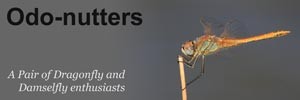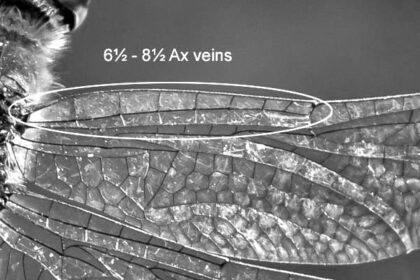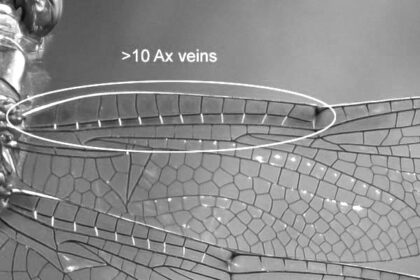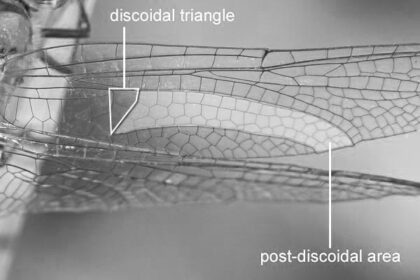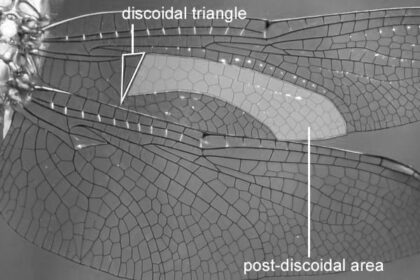Staying inclusive and strictly formal requires a clear view of the fore-wing now, specifically of the grandly named post-discoidal area/field, which could be tricky to see clearly. By inclusive, I mean accounting for traditionally rarer vagrants.
One vagrant, the Globe Skimmer/Wandering Glider (Pantala flavescens), is extremely rare with only 4 accepted records in the UK. In the unlikely event that one did turn up, getting a decent picture would be even less likely. So, I’ve decided to exclude that.
The second traditionally rare suspect is the Broad Scarlet/Scarlet Darter (Crocothemis erythraea). However, things may be changing: both 2024 and 2025 saw numbers of these in Dorset which caused a lot of dragonfly “twitching”. It may be becoming less than a rarity.
However, most of those ending up here will be choosing between the likely UK resident genera [i.e. not rare vagrants] of Skimmers (Orthetrum) species and Darters (Sympetrum) species. Between these two the often more visible antenodal cross (Ax) veins will distinguish.
To account for the possibility of a Broad Scarlet/Scarlet Darter (Crocothemis erythraea), given sufficient visible detail the post-discoidal area/field lies outboard of the discoidal triangle in the fore-wing; does this area narrow or expand/remain constant towards the wing tip?
